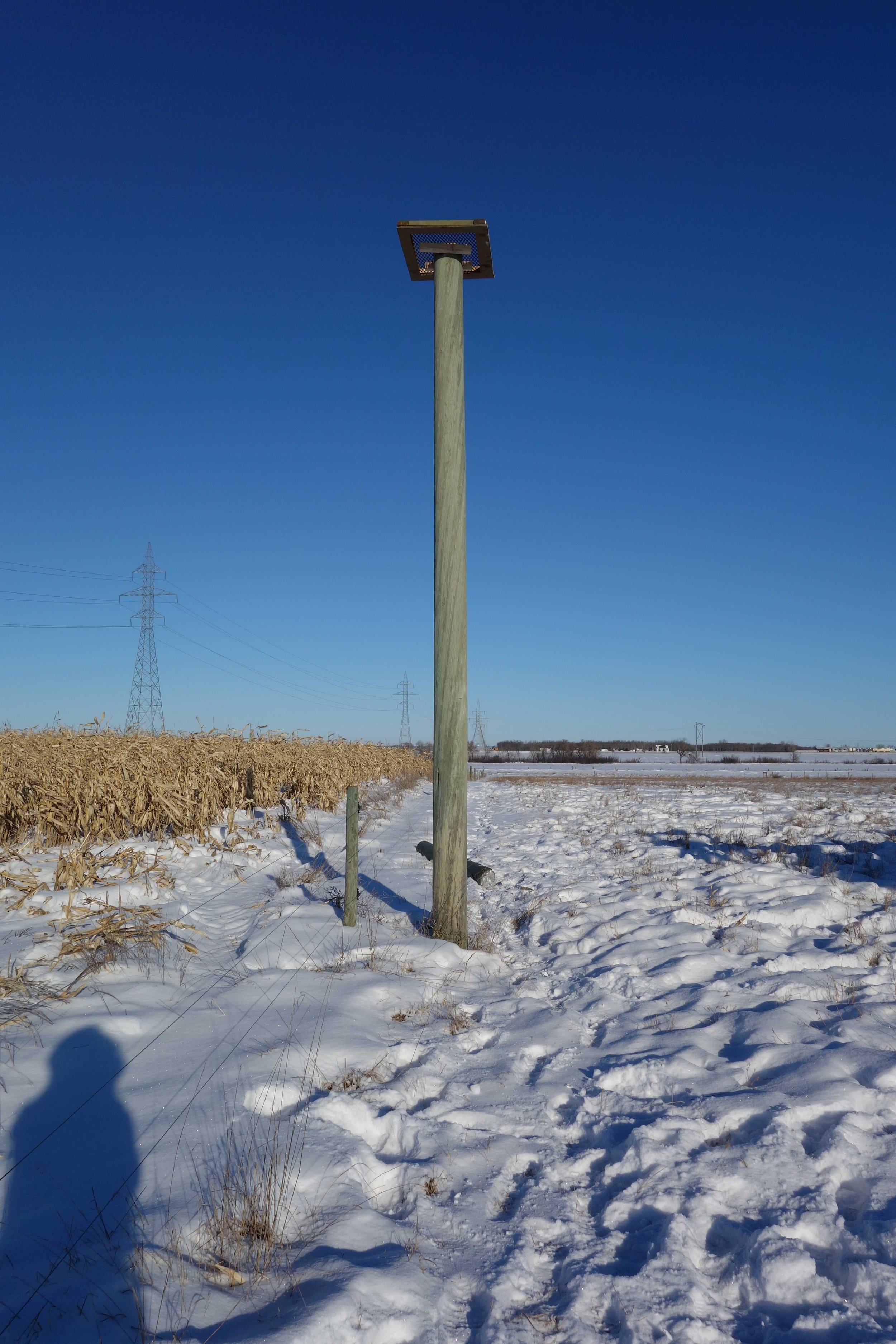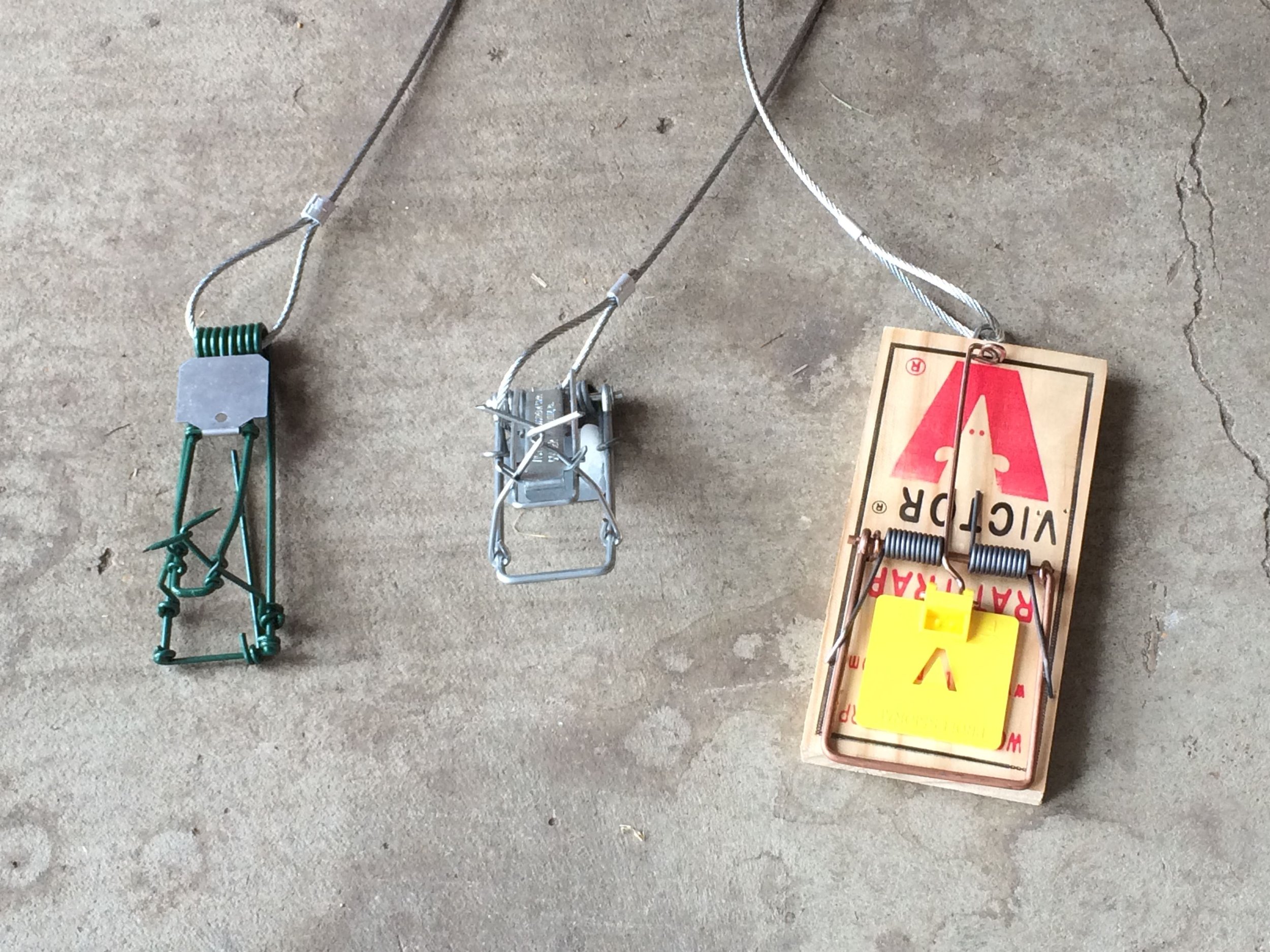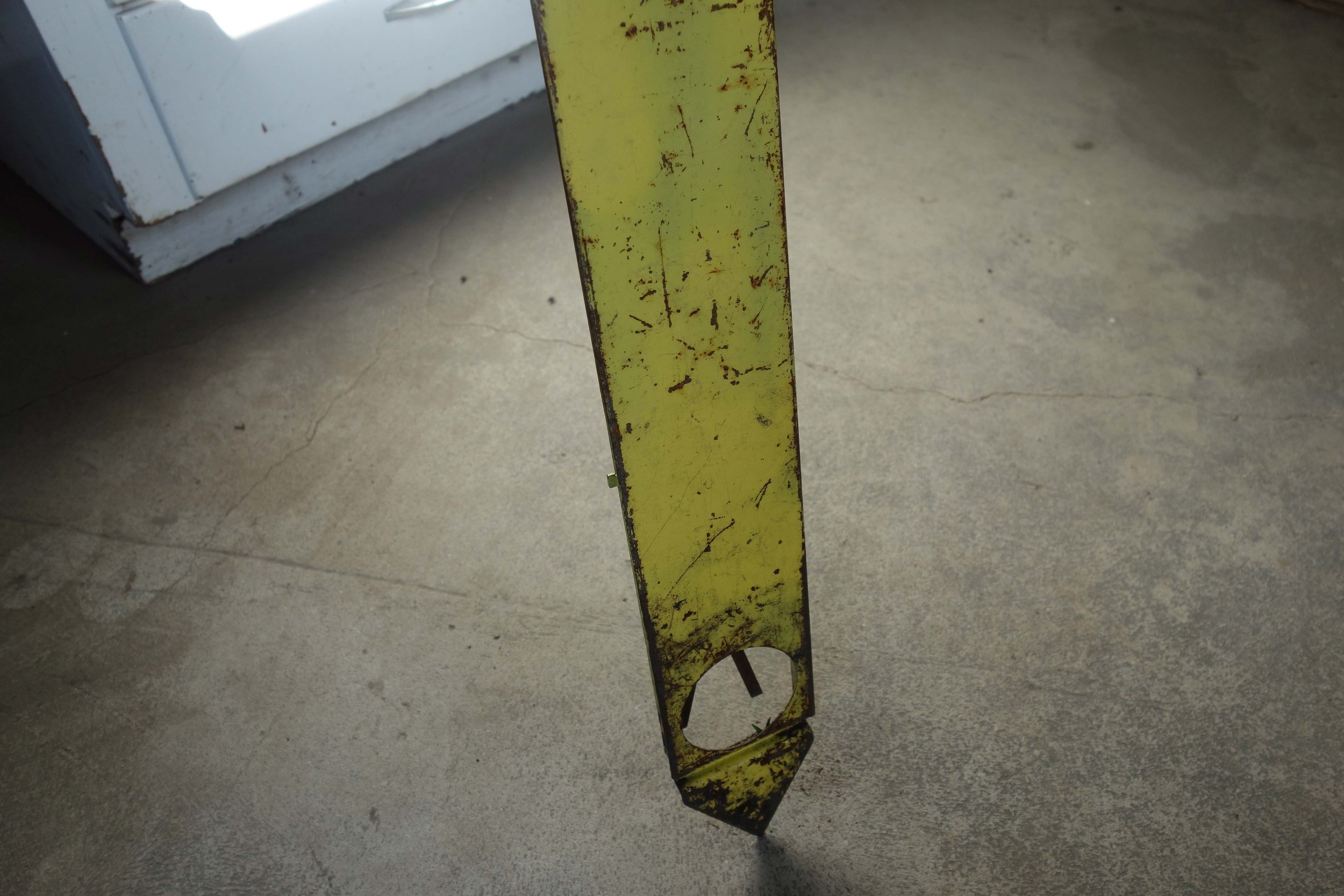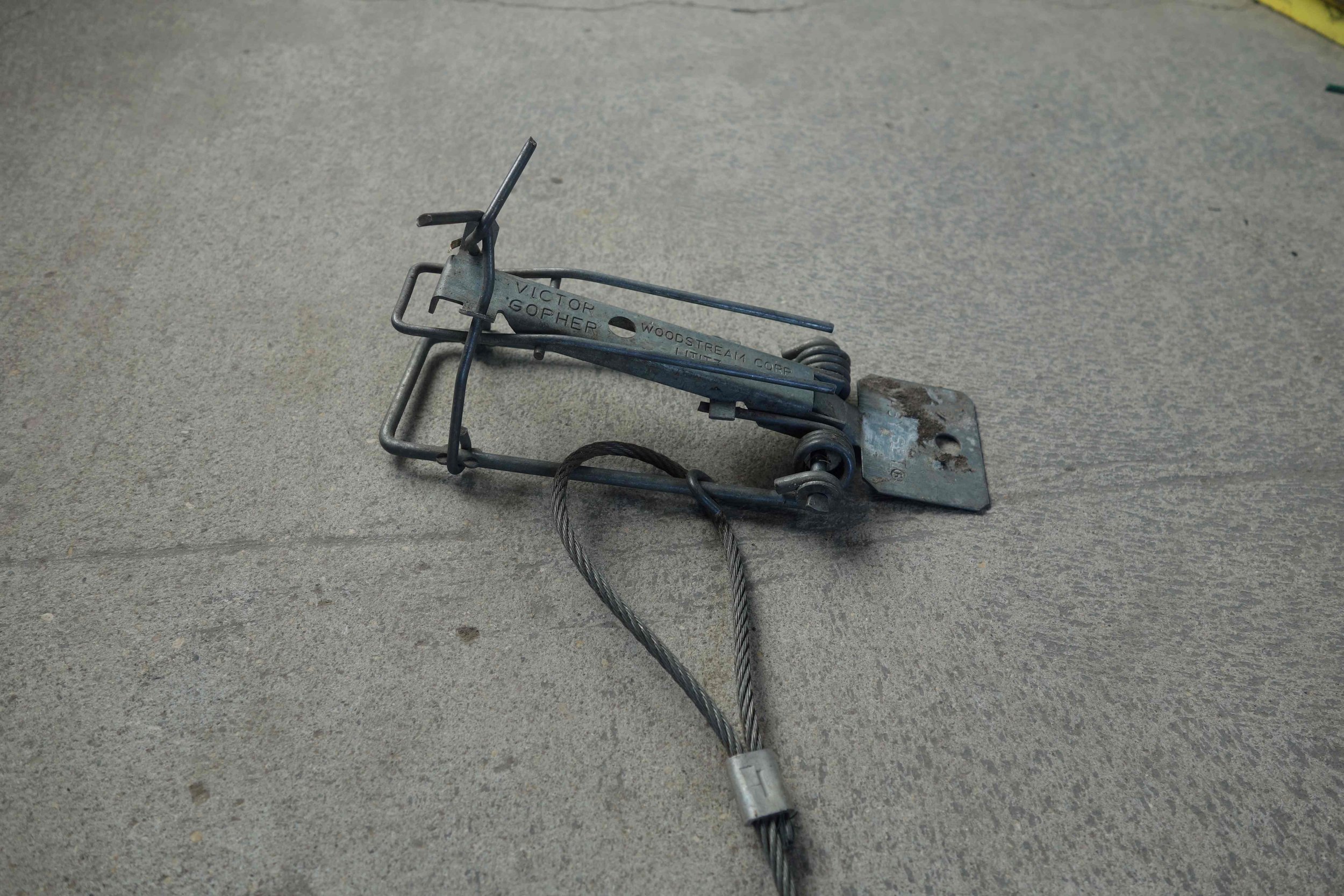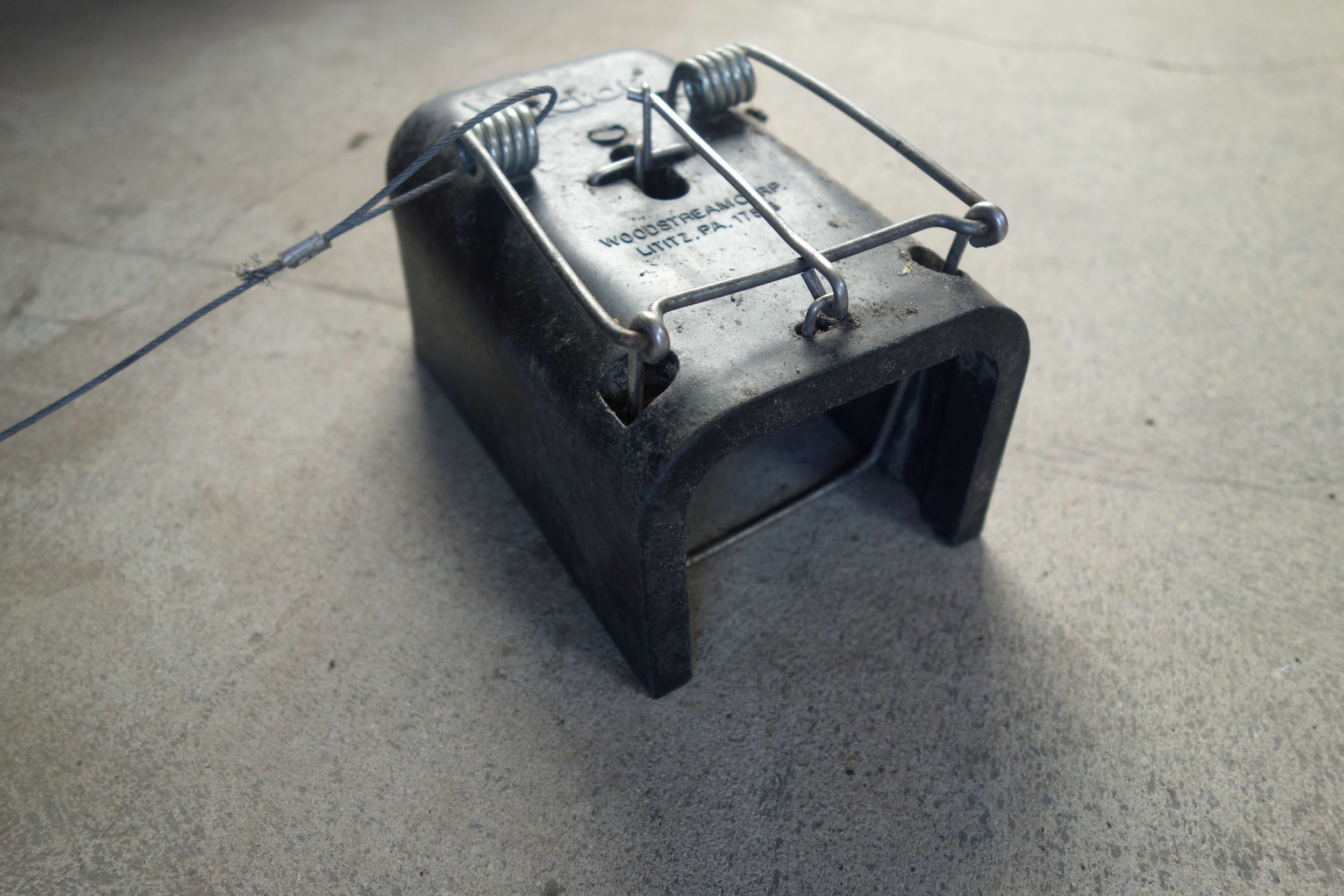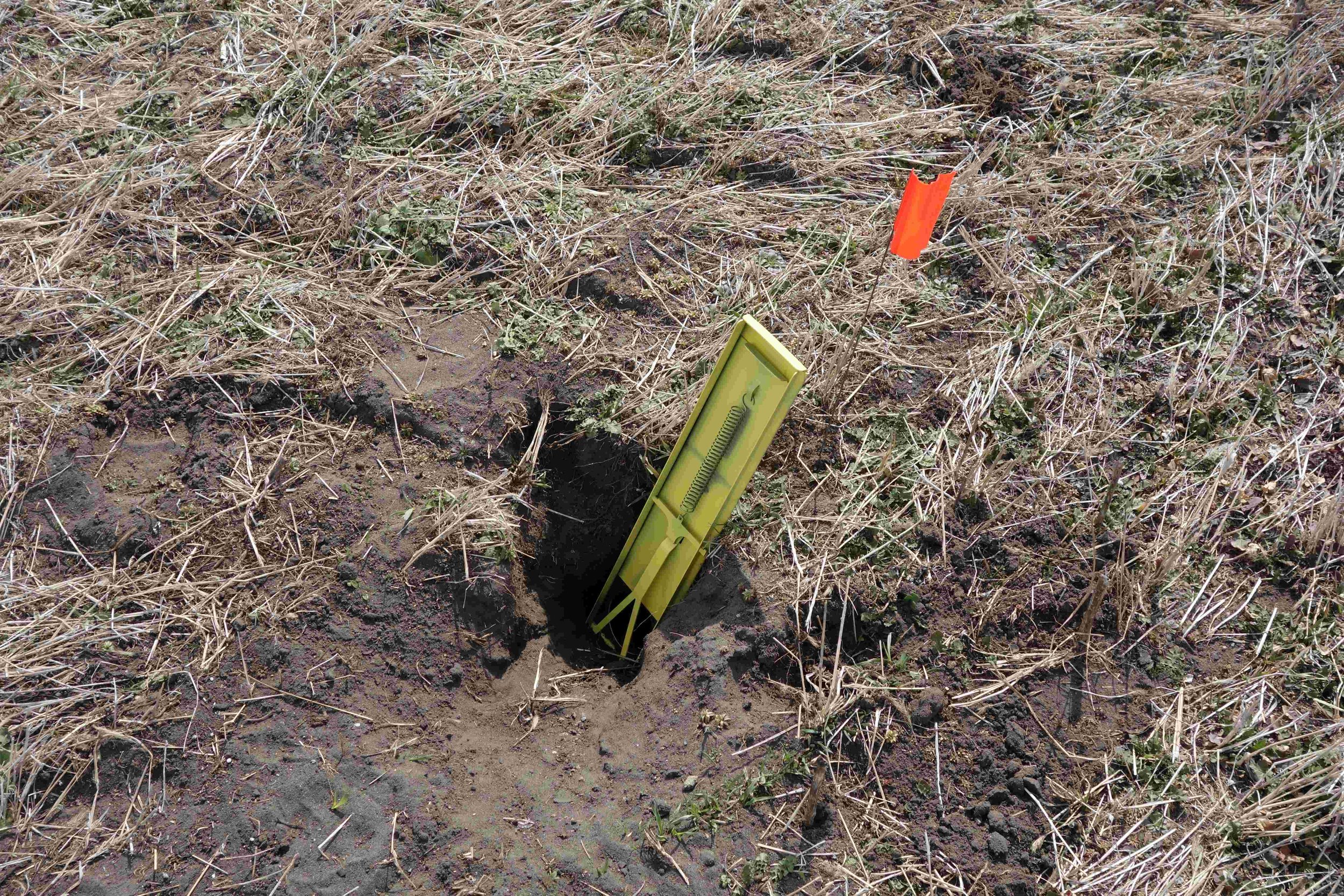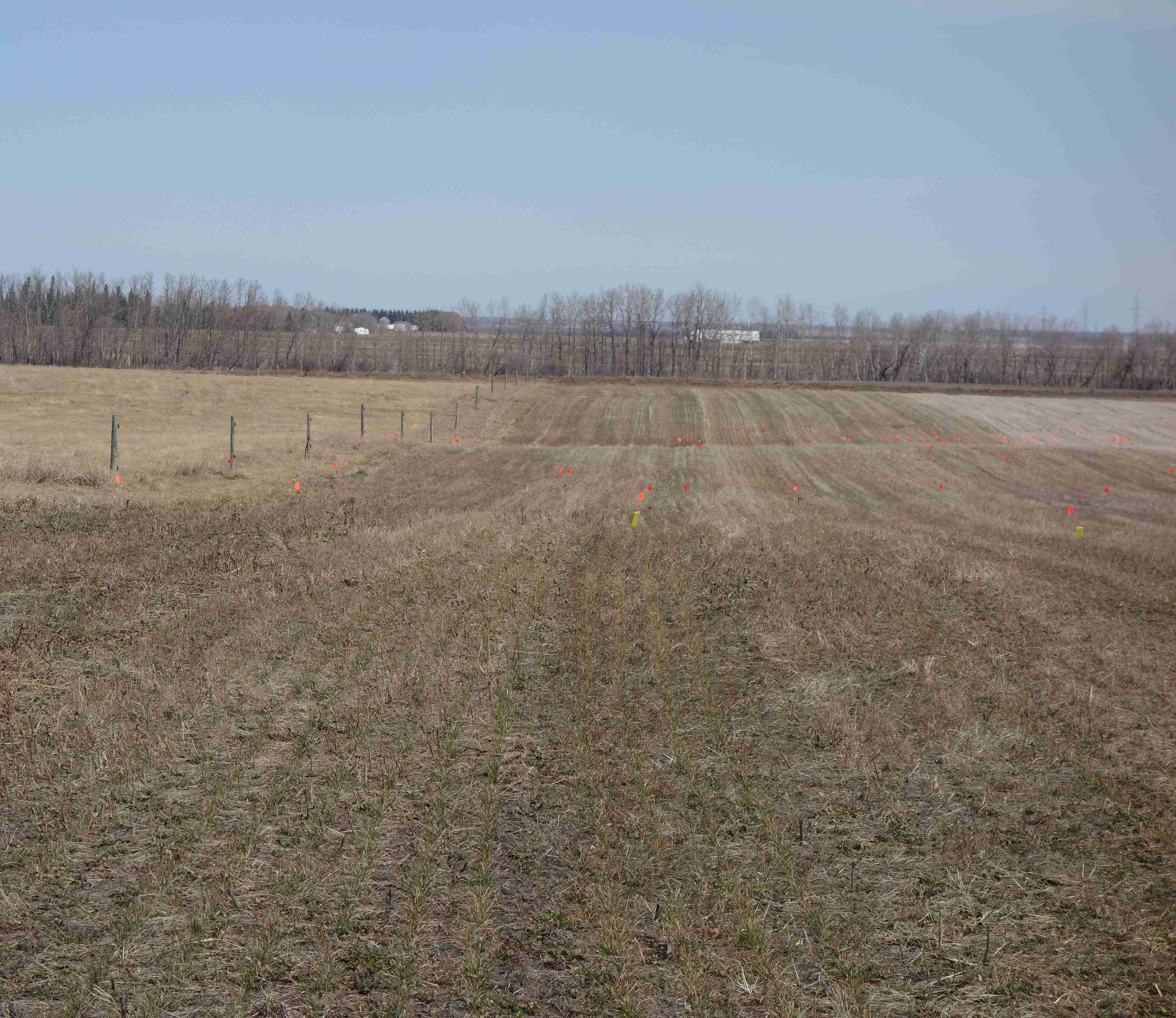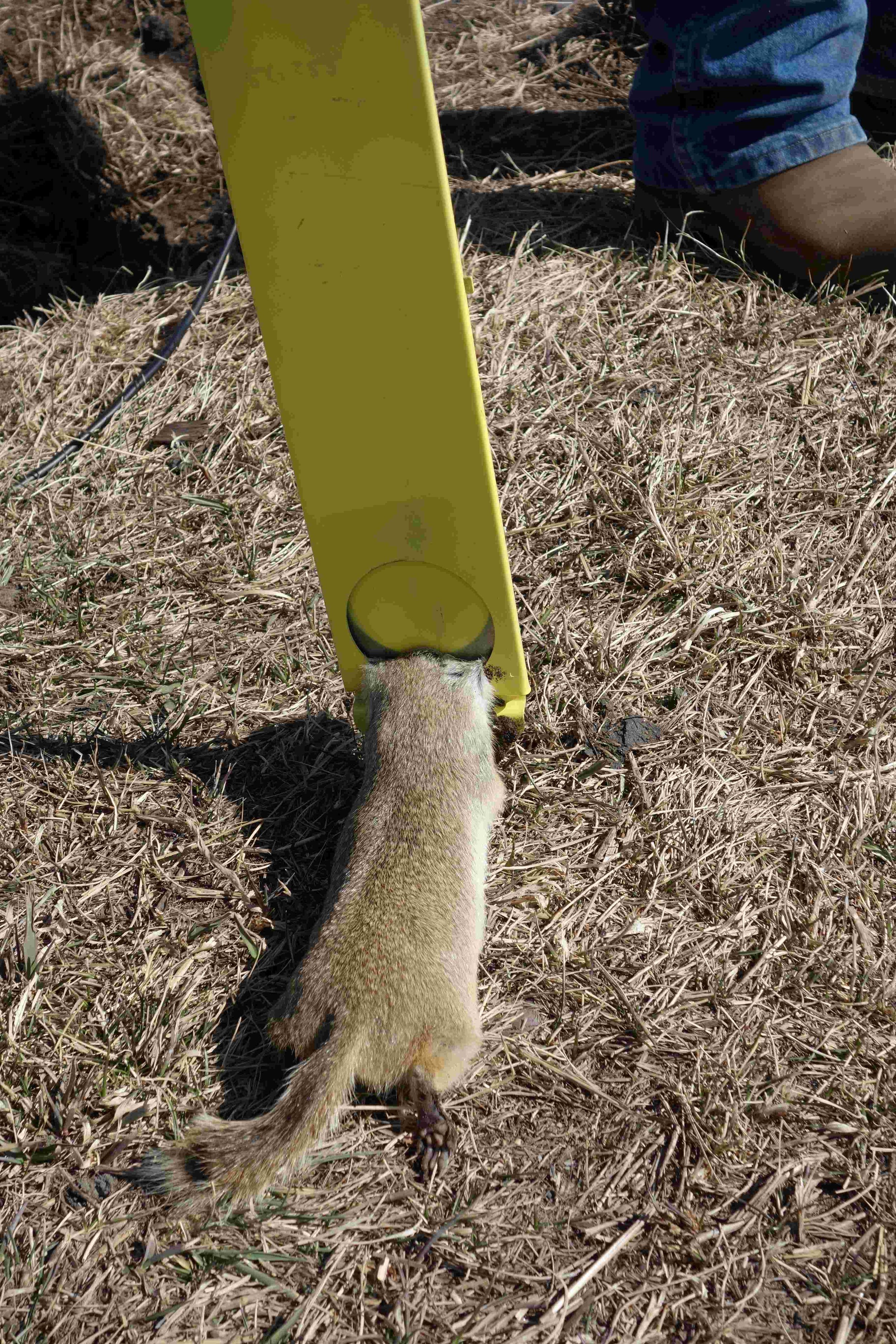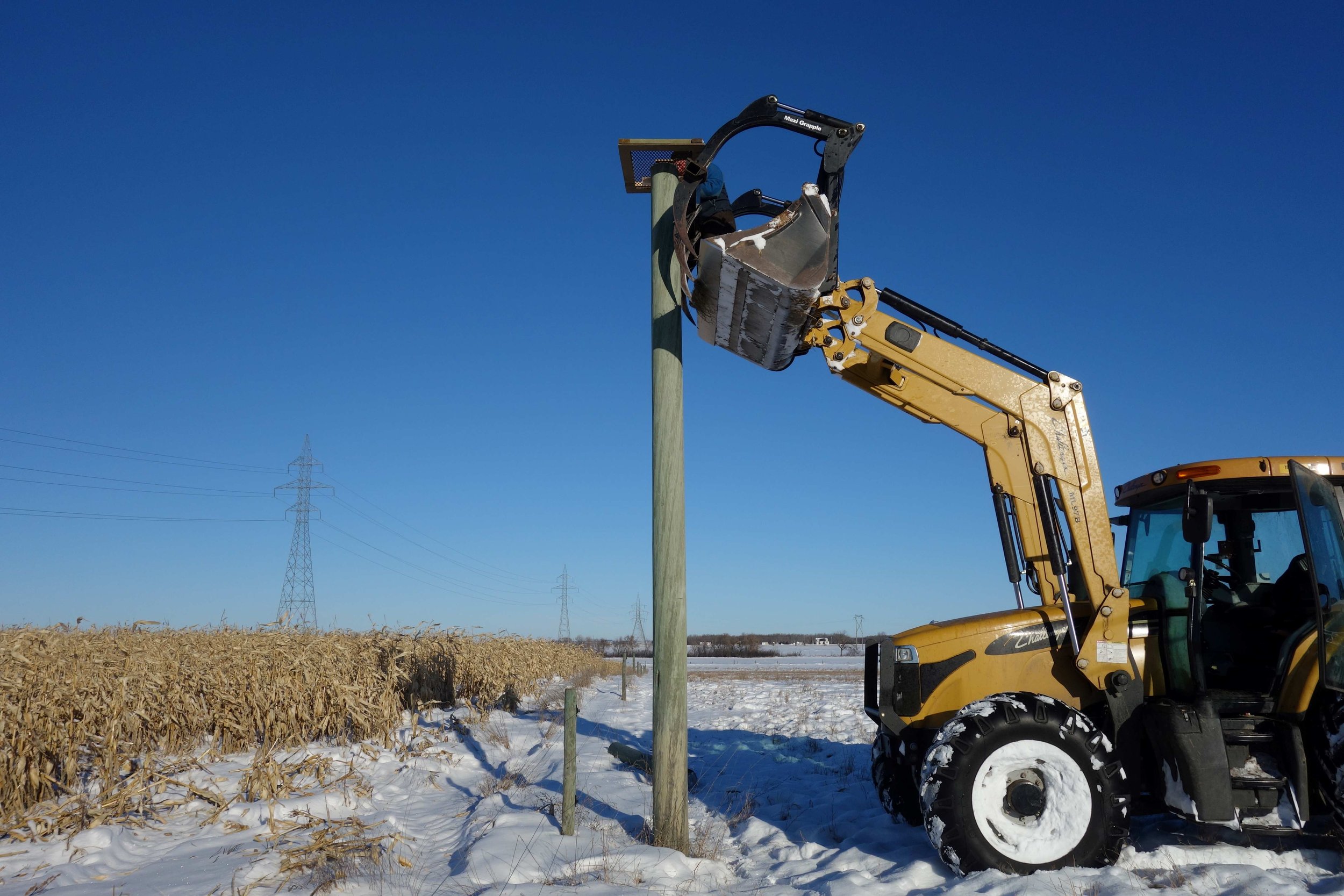Back to Research & Demonstration
Rodent control at Johnson Farm: Burrowing rodent action thresholds in forage crops
Project Details
Project Lead: Kim Wolfe (Manitoba Agriculture)
Collaborators: Melanie Dubois (Agriculture and Agri-Food Canada)
Years: 2015 - 2017
Project Status: Complete
Funding & In-Kind Support: Growing Forward II
Location: Johnson Farm
Scope: Case Study
Keywords: Habitat Biodiversity, Livestock Pest Management
Approach
This project aims to lower Richardson’s Ground Squirrel and Northern Pocket Gopher populations at Johnson Farm to a level that will not significantly affect forage growth. A variety of approaches are explored including trapping, shooting, and an artificial nesting structure for raptors.
Key Findings
Richardson’s Ground Squirrels: Trapping was most effective in May and June as this is when both adults and juveniles are active. A second control period in August could help catch juveniles prior to hibernation.
Northern Pocket Gophers: Most northern pocket gophers were caught during the spring, however, this is attributed more to staff time rather than the habits of the northern pocket gopher. Therefore, trapping throughout the summer would be equally effective.
Raptors: No calculation of number of nearby raptors was calculated. However, in 2017 there were raptors frequently overhead, which made attempting a rodent census impossible.
Related Projects at MBFI:
Developing an efficient and reliable method of censusing ground squirrels
Industry Resources:
Pocket Gophers - Agriculture and Agri-Food Canada
Control of Richardson’s Ground Squirrel - Saskatchewan Agriculture Knoweldge Centre

